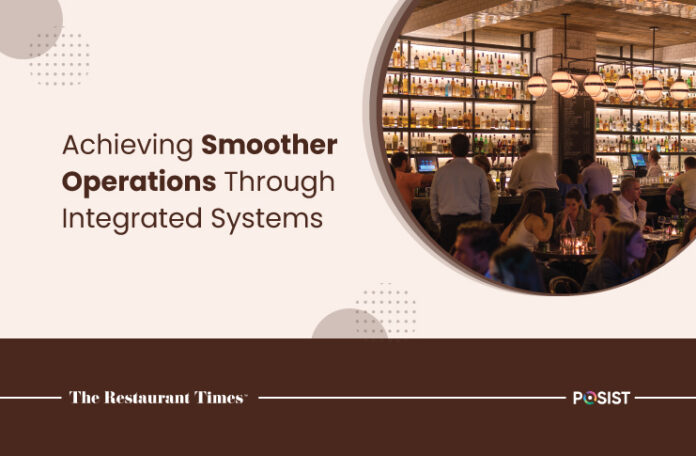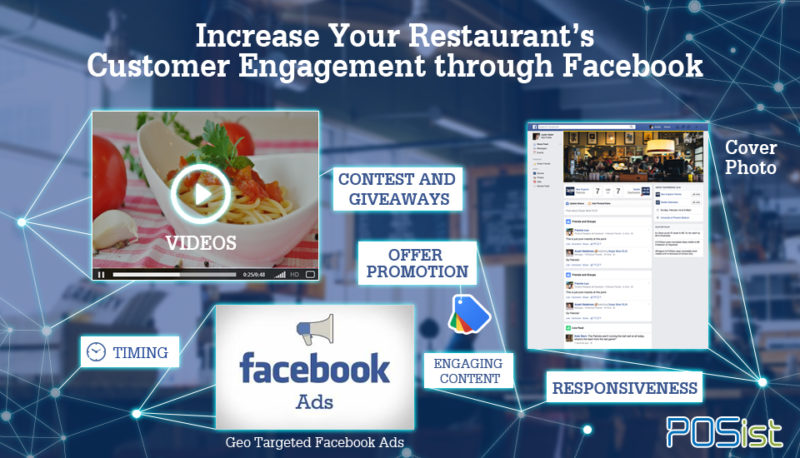Technology is crucial to the success of modern restaurants. Many software companies are now focusing on the restaurant business that offers solutions to enhance operations — from the customer experience to how the business runs. Yet, we found out that about 45% of restaurant owners have trouble with their legacy technology because it is not flexible.
A restaurant’s success depends on integrated operations through all processes and systems. Independent platforms, such as online ordering platforms, rewards programs, food delivery, and customer relationship management systems (CRM), should work together to offer a seamless experience.
Usually, the central system is a point-of-sale (POS) system. Therefore, when choosing a POS, you must consider whether it can be easily integrated with other systems.
What Is An Integrated Restaurant Management System?
An integrated restaurant management system is a collection of applications designed to streamline food service operations—specifically restaurants, nightclubs, confectioneries, cafes, cloud kitchens, food carts, and delivery companies.
It combines the positive features of traditional POS (Point-of-Sale) systems with the following tools:
- for managing phone calls,
- taking table reservations,
- streamlining inventory management,
- billing,
- providing actionable analytics, and
- assisting with marketing strategies such as,
-
- customer relationship management (CRM),
- loyalty programs, and
- building a digital presence.
In addition, it integrates seamlessly with your current restaurant information system (such as your budgeting and employee management solutions). The integration is made possible using open APIs to allow integration with any third-party application.
Why Should Restaurants Have Integrated Operations?
Integration between point-of-sale terminals, checkout kiosks, kitchen management systems, tablet devices, loyalty programs, and other processes enables capabilities you might not have even imagined. Integrating all of your devices will maximize your technological resources and optimize your workforce. A POS system that is integrated allows you to:
- Enhance Guest Experience: Customer information is gathered at the point of sale using CRM software. When this information is integrated with a rewards program, customers can be tracked individually and as a group. You can then use this information to improve and personalize your guests’ experience.
- Save Time and Effort: Regardless of your position within the restaurant, an integrated system enables you to finish your daily tasks rapidly in a single location.
- Improve Kitchen Operations: A customized kitchen display system (KDS) that displays ticket status, routes tickets to the correct stations, and monitors order time will lead to efficient and effective kitchens.
- Make Better Decisions: With an integrated system at the centre of your restaurant’s operations, reporting skills will become extremely valuable. From cost-cutting to tracking and organizing sales, you’ll be able to make better modifications based on reports to eliminate wasteful spending and boost your bottom line.
- Design Marketing Campaigns: With the data, you’re learning about your customers. You can tailor marketing campaigns to what they’re ordering at what times, leading to more successful campaigns.
- Sync All Changes: In the fast-paced restaurant industry, you must make adjustments on the fly. An integrated system synchronizes all necessary device modifications, resulting in an enhanced guest experience.
How Can Restaurants Achieve Integrated Operations?
Online Order-Taking
Online ordering enables restaurants to enhance the customer experience and restaurant operations simultaneously. Whether you accept online orders via your website, a third-party platform, or a mobile app — you must streamline the process for your customers and employees. For this, you need an online ordering system compatible with your POS.
If properly configured, orders will be transferred from the online ordering platform to your POS without requiring manual re-entry by staff.
Accounting System
An accounting system becomes the critical bookkeeping tool in your restaurant’s information system arsenal by leveraging the power of a robust back-office system. By combining employee time and attendance data from the point-of-sale and back-office systems, it manages payroll down to the last penny.
It completes the billing task by comparing invoices and purchase orders using data on purchases provided by the back-office system. When the system is configured to produce cash flows and financial statements, financial reporting is streamlined, keeping operators fully informed of their company’s financial situation whenever they need to know it.
Customer-Relationship Management
CRM systems for restaurants let you put all the information you get from customers in one place. That information can be used in marketing campaigns or to help with shipping.
When a customer signs up for a restaurant’s loyalty program, orders food online, has it delivered, or wants to make a reservation, the restaurant gets information about that person. This information is beneficial for advertising.
Several restaurants use it to stay connected with their customers and tell them about the latest news, special events, promotional offers, and discounts. But it’s only valid if it doesn’t make your team work harder.
To avoid manually entering data into your CRM, make sure it is integrated with your solutions, such as your POS, online ordering platform, mobile application, and any other platform you collect customer data.
Back-Office System
A restaurant’s back-office system is unquestionably the most crucial data management component, serving as the information center for all others. It can manage inventory, procurement, scheduling, and even food safety (HACCP) compliance when integrated with a POS system to its full potential.
Operators can lessen shrinkage that results from waste and theft by using its accurate tracking of sales, purchases, and inventory.
By recommending orders that balance current inventory with past and projected sales, operators can increase the accuracy of their purchasing decisions. Productivity is also increased by using historical sales data, automatic purchasing, reporting, and other back-office features.
It can assess labor cost as a sales component to generate the best-suggested labor schedules and guarantee that labor numbers stay on target. Operators require a back-office system to scale their business.
Conclusion
Restaurant owners are thrown into a dynamic technological world with customers quickly adapting to the latest tech. For many, it’s not only changing how they run their business, but it’s also changing so quickly that they need smart partners who can guide them through the integration process and help them avoid problems, setbacks, and lost time.
Now, people who run restaurants are actively looking for solutions that can work with other collaborators in the industry. For example, operators want to get ahead of the competition by giving customers and delivery drivers real-time information instead of random numbers.
A well-integrated restaurant system can see what’s happening in the back of the house (BOH), look at all the orders being processed, figure out the time of pick-up, and send data to third-party delivery partners.
Related Readings:

















